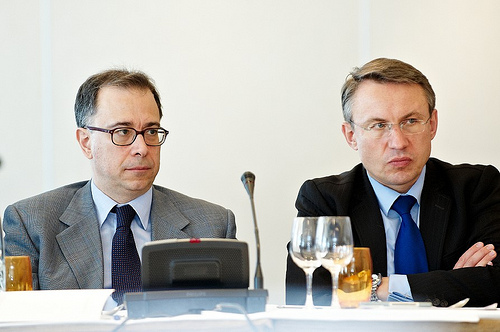
From Nikolai Korchunov, the New York Times: Why do the NATO Strategic Concept and the recently completed Deterrence and Defense Posture Review both state that “the supreme guarantee of the security of the allies is provided by the strategic nuclear forces of the alliance”?
The logical conclusion is that BMD can only play a very limited role in dealing with ostensible threats. In the view of most experts, the risk of an Iranian or North Korean missile attack on Europe is near zero. Neither the capabilities nor the readiness to use them are in place, and this is not likely to change in the near future.
The contradiction between stated policies only serves to increase Russian concerns about the true U.S./NATO agenda behind the BMD deployments in Europe and other parts of the world. There exists an interrelationship between strategic offensive arms and strategic defensive arms, as clearly stated in the New Strategic Arms Reduction Treaty. The pace and ambition of U.S./NATO plans to strengthen their BMD potential risk undermining the strategic balance.
Even the limited current deployments of missile-defense elements are worrying for Russia. The proposed BMD base in Poland, housing increasingly capable SM-3 interceptors, is less than 100 kilometers away from Russia’s Kaliningrad region. At the other end of the Continent, the AN/TPY-2 phased-array radar in Turkey can potentially monitor the air space over the entire Caucasus, parts of Central Asia and much of Southern Russia as well.
Despite these unsettling facts, Russia has always taken a constructive stance on BMD. Russia-NATO BMD cooperation could become a “common business” and serve as an important contribution to the popular “pooling and sharing” and “smart defense” concepts. In fact, it could take us jointly to the next level — of “smartest” smart defense. . . .
It is of critical importance for us to have clear, legally binding guarantees that the missile-defense system being deployed will not be directed against Russia. Such guarantees should be supported by transparency measures and objective military-technical parameters.
The latter have been outlined at the Moscow BMD conference and include interceptor speed; locations of fixed missile-defense systems and areas of operation of mobile missile-defense systems; number of interceptors deployed; coverage of missile defense systems; power and orientation of missile-defense radars. . . .
Still, the more that BMD plans are becoming “facts on the ground,” the less time there is for finding a compromise.
It is in our collective power to make BMD a game-changer rather than a game-breaker by using the chance that history offers us to create a safer and more stable world for all.
Nikolai Korchunov is the acting permanent representative of Russia to NATO. (photo: Security and Defense Agenda)
Image: sda%206%206%2023%20acting%20Russian%20PermRep%20to%20NATO.jpg

